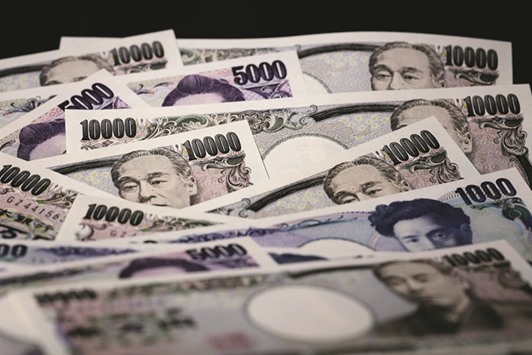Bank of America Corp took advantage of Japan’s hunger for anything but negative yields with its first benchmark-sized yen bond sale since the global financial crisis.
The US bank sold ¥110bn ($1.01bn) in five- year debt last week, according to its Japanese securities unit, which helped manage the deal. The lender marketed the bond to investors by referring to its 0.39% absolute coupon rather than with a spread over the benchmark borrowing cost.
It was the biggest single yen note sold by an overseas bank since May 2014, and was initially offered at a range with a higher coupon.
“Expectations right now are for us to go deeper into minus rates, so investors probably saw this deal as an opportunity to lock in a steady flow of cash,” said Mana Nakazora, the chief credit analyst in Tokyo at BNP Paribas SA. “Investors have very few choices.”
Demand for riskier bonds has intensified since the Bank of Japan announced in January plans to start charging fees on some reserves with sales of lower-rated domestic yen bonds climbing 58% in 2016.
Moody’s Investors Service and S&P Global Ratings both rate Bank of America at their third-lowest investment grade, while Fitch Ratings evaluated the lender at two levels higher at A.
With uncertainty about how far Japanese rates will fall into minus territory, investors are hesitant to bid on some bonds based on spreads in case the benchmark moves widely during the marketing process.
“This is actually the first time for an international issuer to adopt coupon-based pricing for an institutional investor targeted benchmark deal since the BoJ has adopted negative-rate policy,” said Gen Sakai, head of Bank of America Merrill Lynch’s Japan debt capital markets syndicate in Tokyo.
Bank of America initially marketed the bond at a rate of 0.39% to 0.41%, he said.
Bank of America offered the yen debt in a format covered by US law, unlike sales undertaken in Japan’s Samuraibond market.
The last such debenture brought to market under Japanese rules was a ¥4.5bn note by the South American multinational issuer Corp Andina de Fomento. Issuance in the market is down 72% this year from a year earlier, partly reflecting rising costs to swap funds raised out of the yen.
Jerry Dubrowski, a spokesman for the issuer, Bank of America, declined to comment on its sale. Under proposals released last year by the Federal Reserve Board, bonds need to be sold under US law to count toward a regulatory buffer used if a bank fails, known as total loss-absorbing capacity.
“The cheapest way for US banks to comply with TLAC is to issue senior holding company debt, but it has to be issued under US law,” said Arnold Kakuda, a banking analyst at Bloomberg Intelligence in New York. “It is still at the proposal stage but the final rule tends to be pretty close to the proposal.”
Bank of America’s debt is listed on the Tokyo Stock Exchange’s Pro-bond market, as is Citigroup’s global Japanese-currency denominated offering of ¥81.5bn sold in February. The yield on Japan’s 30-year bond was 0.36% yesterday.
“Japanese investors are desperate for something that provides yield,” said Bank of America Merrill Lynch’s Sakai. “Investors valued the rare opportunity to buy Bank of America yen paper.”

Japanese yen banknotes of various denominations are arranged for a photograph in Tokyo. Bank of America sold $1.01bn in five-year debt last week, according to its Japanese securities unit, which helped manage the deal.


